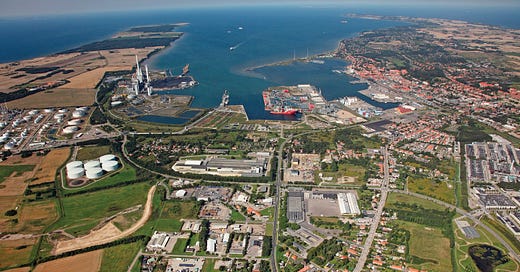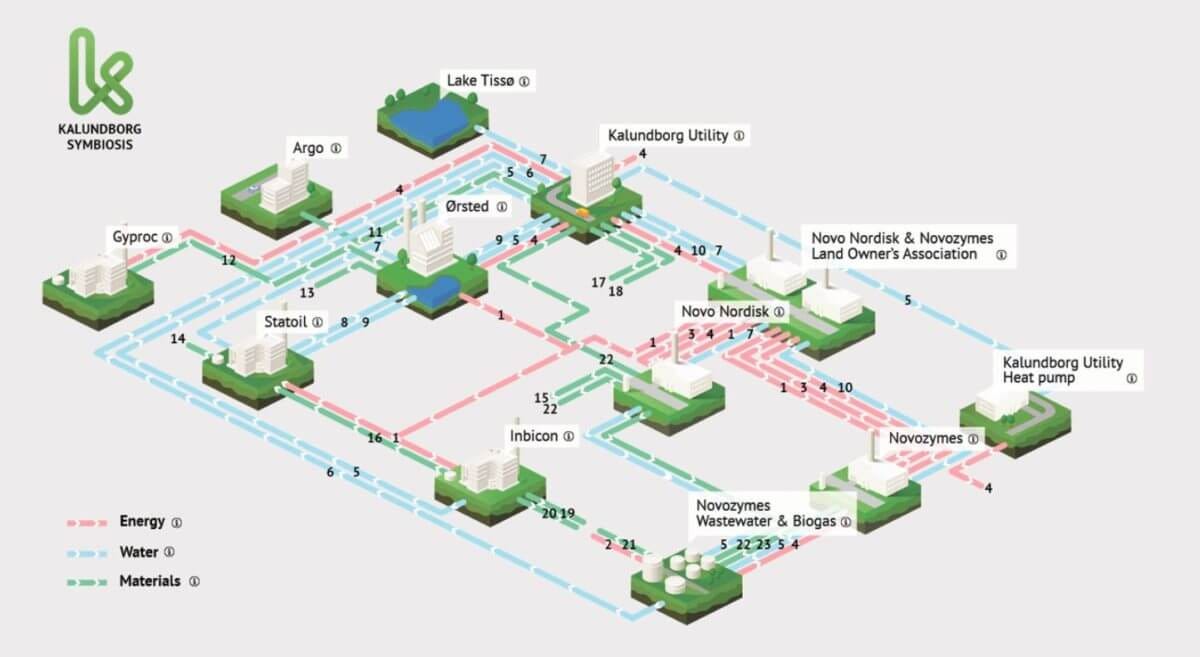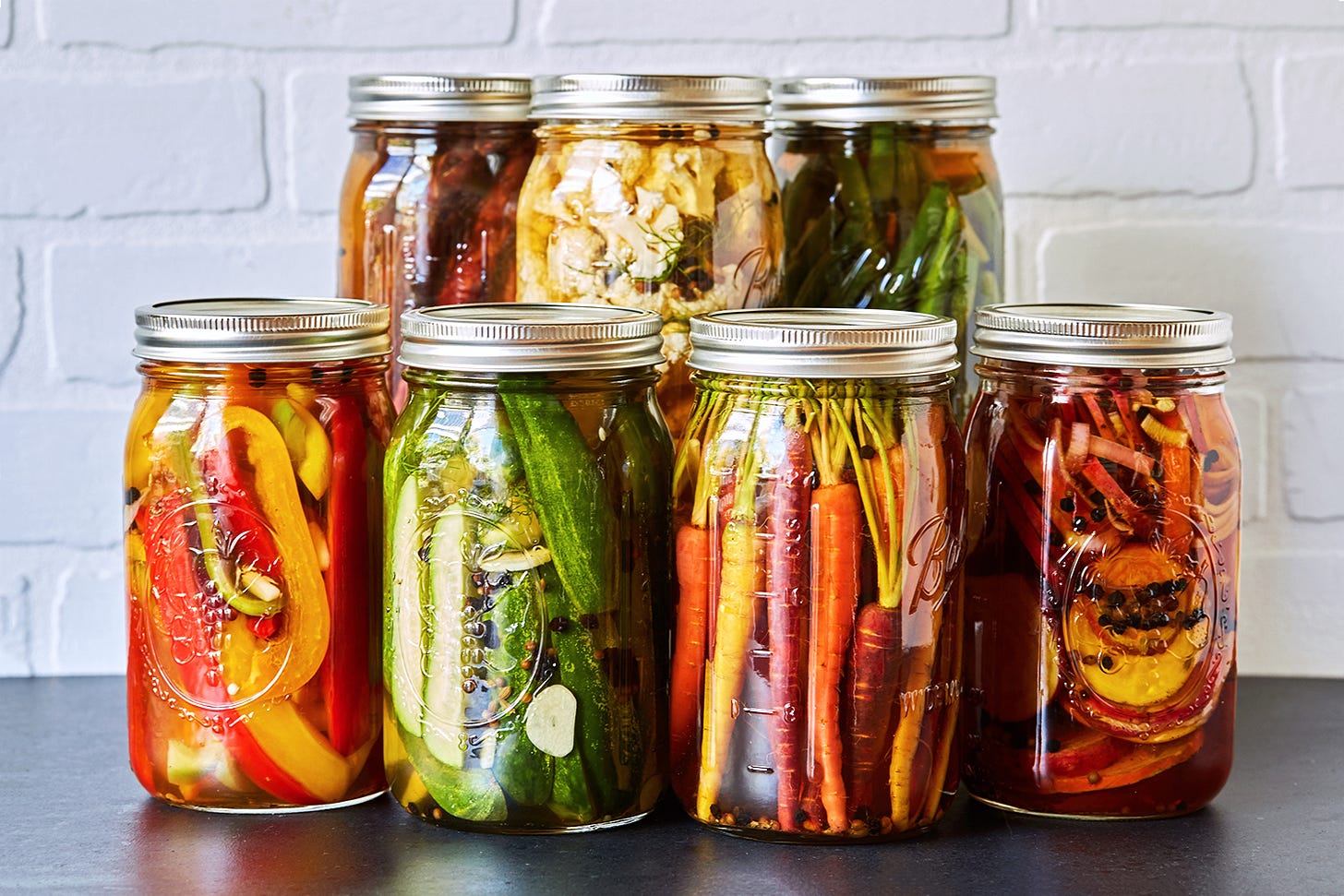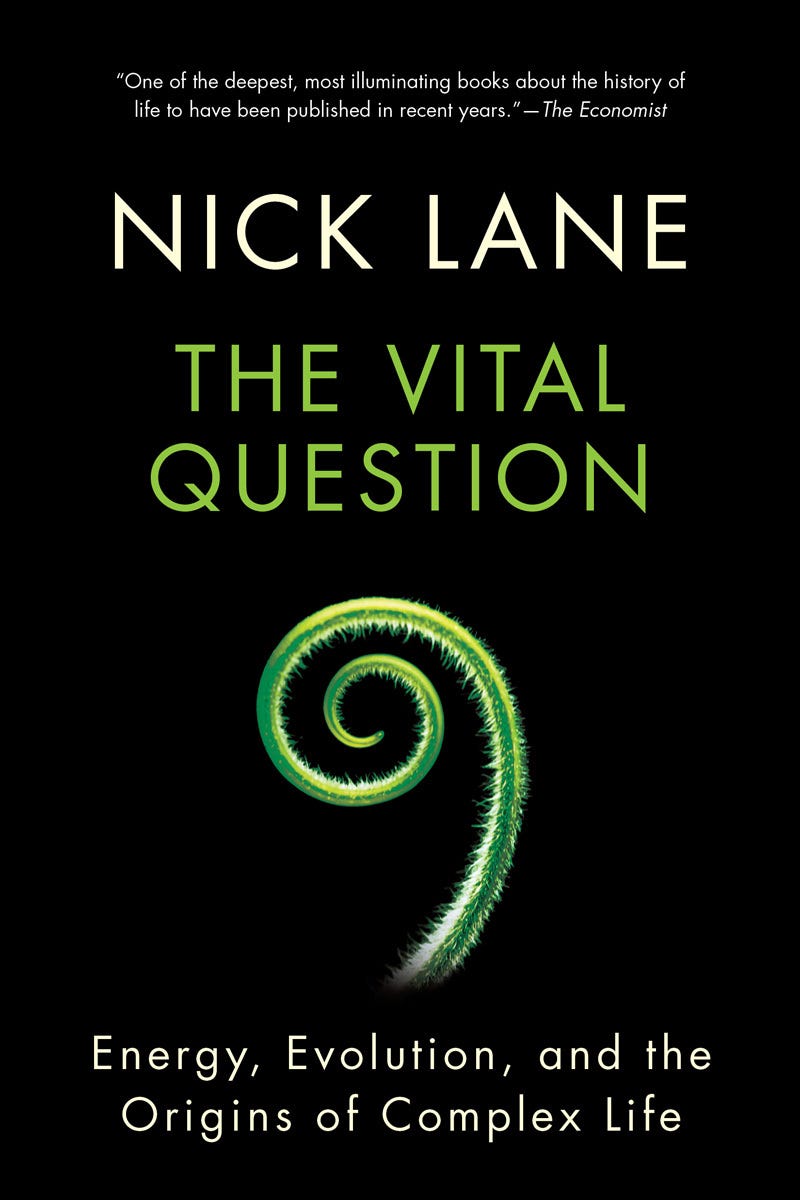BRB w/ Nathan P - Industrial Symbiosis in Denmark, Pickling & The Vital Question
A model for industrial sustainability in Denmark, how to pickle anything, and a deep-dive on the origins of life on Earth (#15).
Hi all,
Welcome back to BRB w/ Nathan P - a weekly newsletter featuring 💥1 Breakthrough, 🥘1 Recipe, and 📚1 Book on food & climate.
Before we get started, here are some highlights of food & climate in the news this week:
** Highly recommend **: Tree-Planting is No Solution Without Animals (Bloomberg). This is a fantastic article on why animals “animate the carbon cycle” to help plants draw carbon.
The Drawdown Roadmap: this week, Drawdown Labs (from authors of Project Drawdown) released their roadmap to address the climate crisis in a free 5-video course.
💥 Breakthrough: Industrial Symbiosis in Denmark
There’s a hot infrastructure term bouncing around the biotech community. I know, infrastructure isn’t sexy, so you know this one’s special. It’s co-location.
Co-location means locating a manufacturing facility next to another facility. This makes it easier to share energy, water, and materials.
Utilities and feedstocks often account for the majority of operating costs. In biotech, a feedstock is a raw material that feeds the microorganism making the desired product. Co-location improves both the business case and the environmental footprint.
Co-location has 3 key benefits:
♻️ enabling circular production, where the waste streams of one process become the inputs of another
🌱 reducing carbon emissions, pollution, and waste
💰 generating significant cost savings for all companies involved
This is a diagram of the Kalundborg Eco-Industrial Park, also called the Kalundborg Symbiosis. It was founded in 1972 and contains 16 public and private companies, including world-leading biotech companies Novozymes.
There are over 30 flows of energy, water, and materials between these facilities as shown above. Each year, this cooperation saves:
♻️ 62,000 tons of residual material
💧 4 million tons of groundwater
💨 82% of the CO2 emissions across the entire park
🏡 40,000 homes are provided heating with excess heat produced
The term “industrial symbiosis” was actually first defined by a station manager at Kalundborg:
"a cooperation between different industries by which the presence of each…increases the viability of the others, and by which the demands of society for resource savings and environmental protection are considered."
The Kalundborg Symbiosis has been optimized over the past 50 years. It is now a model for industrial cooperation and sustainable production, all while improving the business case of each facility involved.
This symbiosis is ultimately inspired by nature, where waste does not exist and organisms share resources to thrive. We should not force nature to produce like our factories. Instead, our factories should produce like nature.
🥘 Recipe / Technique: Pickling
Alright, I’m cheating this week. I have been traveling and am preparing a yummy and climate-friendly recipe for next week. Today, I want to share a technique that prevents food waste and makes the best accompaniments for your favorite dishes.
I’m talking about pickling. Anything. Pickles, red onions, peppers, radish, jalapeños… you name it.
You’ll be shocked at how much better a pickled condiment can make a sandwich, salad, or appetizer. Make your own pickles once, and you may never buy them again.
Szechuan pickle recipe below. Simply swap the vegetable and aromatics to make anything else.
If you make it, please send pictures :)
📚 Book: The Vital Question
If you often marvel at the complexity and beauty of living things like I do, then this book is for you.
The Vital Question by Nick Lane tells the story of the origin of life on Earth. It might not be like you learned in school - no primordial soup here.
4 billion years ago, life formed in deep sea alkaline hydrothermal vents thanks to an electric potential across membranes. This led to the formation of an ancient microbe called archaea.
Nick Lane explains how cells operate is dictated by energy, why other forms of complex life don’t exist, and how multicellular life came to be. It’s fascinating, and as a heads up, it’s a little technical. Yet it left me with a newfound appreciation for how rare and improbable our existence is, for which I am grateful.
Two of my favorite biology facts come from this book:
Our mitochondria (the famous “powerhouse of the cell”) create energy through an electric potential of 150 mV (millivolts) across a membrane 5 nm (nanometers) thick. The current generated is of 30 million Volts / meter - the equivalent of a lightning bolt. It happens thousands of times per second, in each of our cells. That is what makes us alive.
All multicellular life on Earth comes from an endosymbiosis between two ancient microbes, a bacteria and an archaea. The bacteria went inside the archaea and they made a pact: the bacteria would make energy for the archaea, who would reproduce its genes in return. This partnership was demonstrated to have occurred successfully only once - and it led to all multicellular life on Earth.
So let’s take a breath, and be grateful we are alive. 🙏
Thank you for reading - BRB next week ✌️
If you’re enjoying this post, you might also enjoy my friend Naman’s newsletter: Not My Problem. Each week, he shares an impactful story of an individual or a start-up solving an environmental challenge. He also posts daily stories on LinkedIn. Check it out!
🥘 Recipe: Szechuan Pickles
Ingredients (makes 1 Mason jar)
4-5 pickling cucumbers
400mL white distilled vinegar
400mL water
40g salt
Aromatics (here: 1 tbsp of Szechuan peppercorns, 1 tbsp coriander seeds, 1 tbsp of mustard seeds, and a few sprigs of dill)
Instructions (15mins)
Cut the pickle into 3mm slices in the direction of your choosing.
In a medium saucepan, add the water, distilled vinegar, and salt. Add the aromatics and bring to a boil.
Place the cucumbers into the jar. Pour the boiling liquid into the Mason jar to fill it up. Let cool without a lid until it comes down to room temperature, then refrigerate.
This will stay good for months. Enjoy with your favorite sandwich or on its own :)
About Me
Hi there! My name is Nathan Paumier - I’m an avid reader, food enthusiast, and climate optimist. I started this newsletter after frequent questions on food tech, reading recommendations, and my secret recipes.
Want to get in touch or chat further? Any feedback or things you’d like to see more of?
Forwarded this email?
Subscribe below to receive an email from me every week.
No spam, just quality ingredients.









